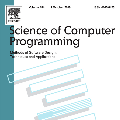In blockchains such as Bitcoin and Ethereum, users compete in a transaction fee auction to get their transactions confirmed in the next block. A line of recent works set forth the desiderata for a "dream" transaction fee mechanism (TFM), and explored whether such a mechanism existed. A dream TFM should satisfy 1) user incentive compatibility (UIC), i.e., truthful bidding should be a user's dominant strategy; 2) miner incentive compatibility (MIC), i.e., the miner's dominant strategy is to faithfully implement the prescribed mechanism; and 3) miner-user side contract proofness (SCP), i.e., no coalition of the miner and one or more user(s) can increase their joint utility by deviating from the honest behavior. The weakest form of SCP is called 1-SCP, where we only aim to provide resilience against the collusion of the miner and a single user. Sadly, despite the various attempts, to the best of knowledge, no existing mechanism can satisfy all three properties in all situations. Since the TFM departs from classical mechanism design in modeling and assumptions, to date, our understanding of the design space is relatively little. In this paper, we further unravel the mathematical structure of transaction fee mechanism design by proving the following results: - Can we have a dream TFM? - Rethinking the incentive compatibility notions. - Do the new design elements make a difference?
翻译:在Bitcoin和Etheum等链条中,用户在交易费拍卖中竞争,争取在下块中确认其交易。最近一行的工程为“梦想”交易费机制(TFM)设定了一种分层,并探索了这种机制是否存在。梦想的TFM应该满足1个用户激励兼容性(UIC),即真实的投标应该是用户的主要战略;2 矿工激励兼容性(MIC),即矿工的主要战略是忠实地执行规定的机制;以及 3 矿工的用户合同方证明(SCP),即采矿工和一个或多个用户的联盟没有能够通过偏离诚实的行为来增加它们的联合效用。SCP的最弱的形式被称为1-SCP,我们只打算针对矿工和单一用户的串通提供抗御能力。可悲的是,尽管有各种尝试,但现有的机制无法满足所有三种情况。由于TFM在模型设计和假设方面脱离经典机制的设计,因此我们从模型和假设中可以增加联合性。DO最弱的形式就是我们设计一个稳定的设计工具。





